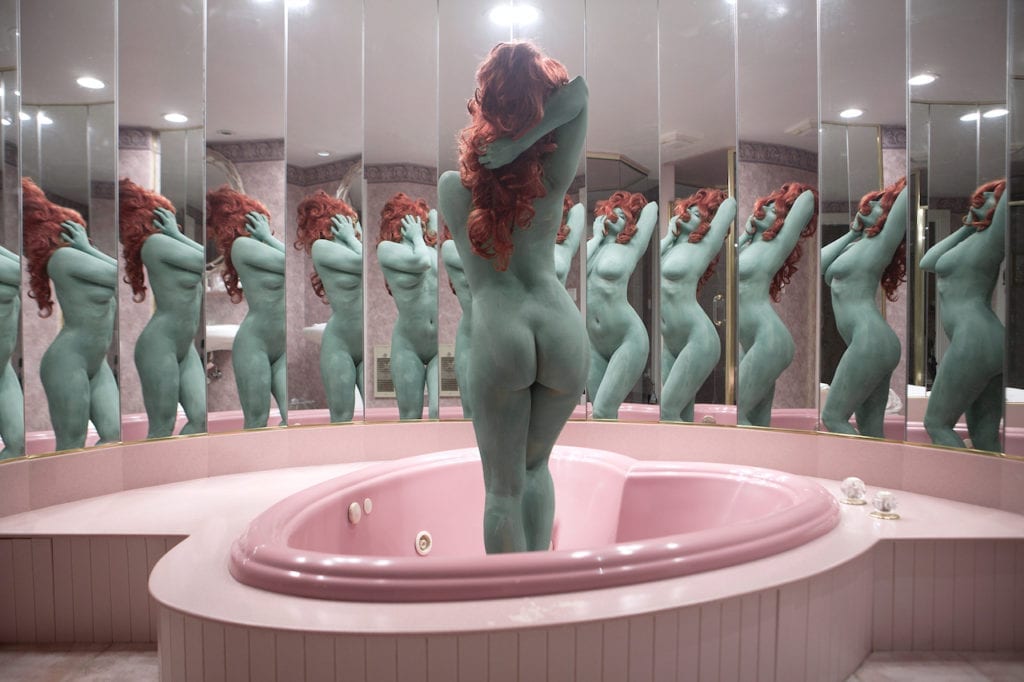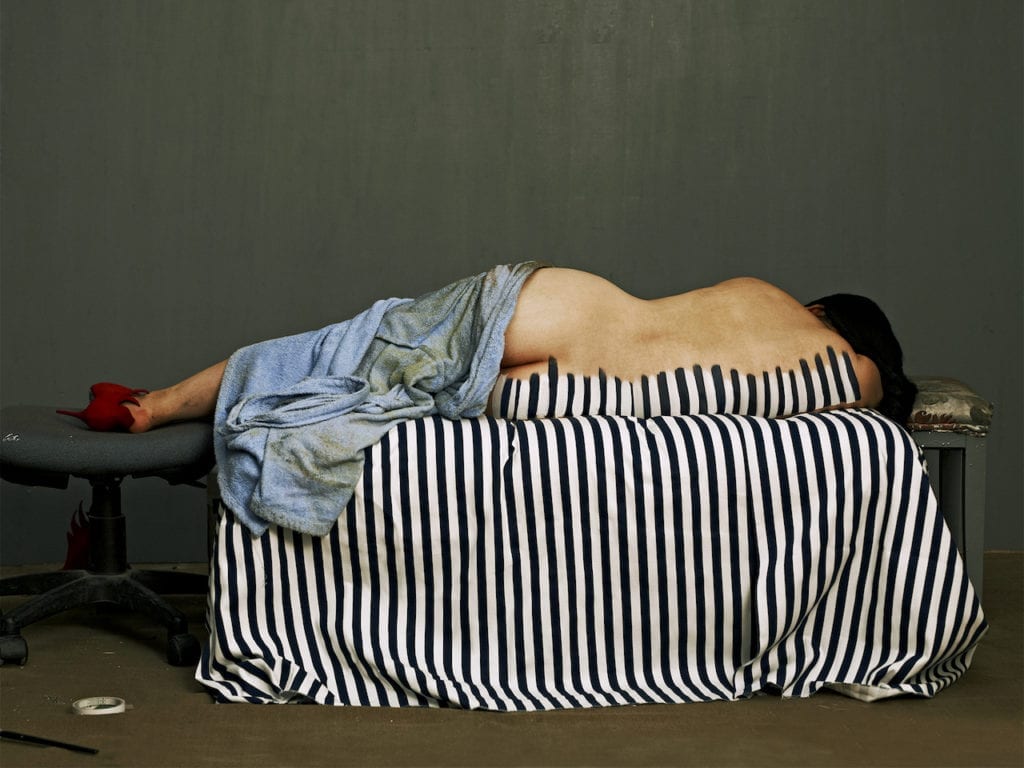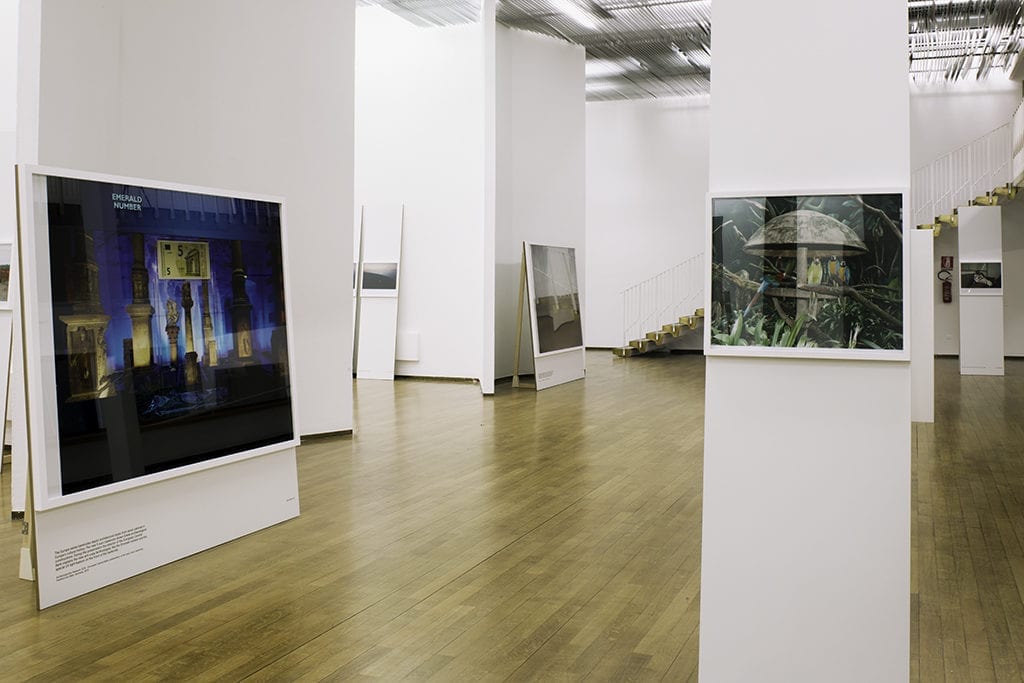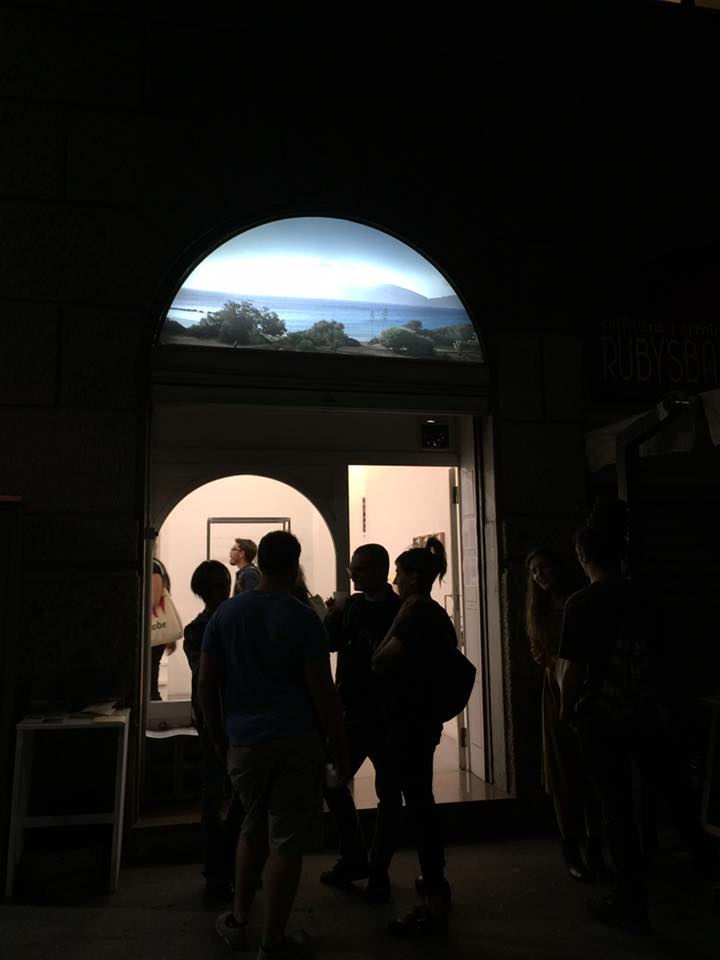“When we know that the photograph is by a woman, its menace and objectification disappears, leaving in its place a wonderful female comedy, wittily satirising the absurdity of the beautification process,” stated Val Williams in The Guardian Weekend in 1993, referencing a shot by Andrea Blanche but writing in an article about women in fashion photography more generally.
It’s a perspective that came to mind while looking at the exhibition The Female Gaze at the inaugural Photo Vogue Festival, held in Milan from 22-26 November. Curated by Alessia Glaviano and Chiara Bardelli Nonino, Vogue Italia‘s senior photo editor and photo editor respectively, The Female Gaze mixed iconic images by artists such as Nan Goldin and Cindy Sherman with more recent projects by emerging photographers to show, how ‘the male gaze’ has been appropriated by women over the last twenty years or so.
“Photography is a field dominated, for years, by a male point of view, which reiterates the paradox whereby women – the subjects and the main recipients of fashion photography – find themselves being subjected to the resulting imagery in a passive role,” stated Glaviano and Bardelli Nonino in their introduction to the show.

Photo Vogue is an online initiative which was launched by Vogue Italia in 2011, and the go-to fashion Bible’s power and influence was evident throughout Photo Vogue Festival. Its main hub, and the location for The Female Gaze exhibition, was BASE, the 6000 square metre former factory in Milan’s trendy Tortona district, for example, while a solo show devoted to Vanessa Beecroft – Vanessa Beecroft’s Polaroids 1993-2016 – was staged at Palazzo Reale, in what used to be the Prince’s private apartment. Beautifully curated by Glaviano, the exhibition featured blow-ups of rare Polaroids and sculptures that unexpectedly melded harmoniously with the lavish surroundings.
A third show presented emerging photography talents found via the Photo Vogue platform, which displays work uploaded by users and selected by the Vogue Italia staff. For the exhibition, Photo Vogue/inFashion, Vogue Italia‘s team invited extra experts to help pick out the best image-makers, including Paris Photo’s director Florence Bourgeois and curator Charlotte Cotton; in addition, the young Chinese artist Kiki Xue, was selected to shoot an editorial spread for Vogue Italia. Personally, Romina Ressia’s ironic portraits were among my favourites.

The festival had also garnered support among other galleries and festivals, with a large programme of satellite shows including an exhibition by Christto & Andrew at the N0nostanteMarras concept store and a show curated by the Fantom collective at the impressive Viasaterna contemporary art gallery. To see all the satellite shows would have taken weeks, but Armin Linke’s installation The Appearance of That Which Cannot be Seen at the Pavilion of Contemporary Art (PAC) particularly stood out for me.
Drawing on Linke’s archive of some 20,000 images, by ground-breaking contemporary thinkers such as Bruno Latour and Ariella Azoulay, it made for a compelling, inspiring, multi-layered image-text-sound reflection on consumption, technology, ethics, politics and economics.


Photo Vogue Festival took place from 22-26 November in Milan. www.vogue.it
++Updated 18.00 to correct typos and add info on Officine Fotographiche++
